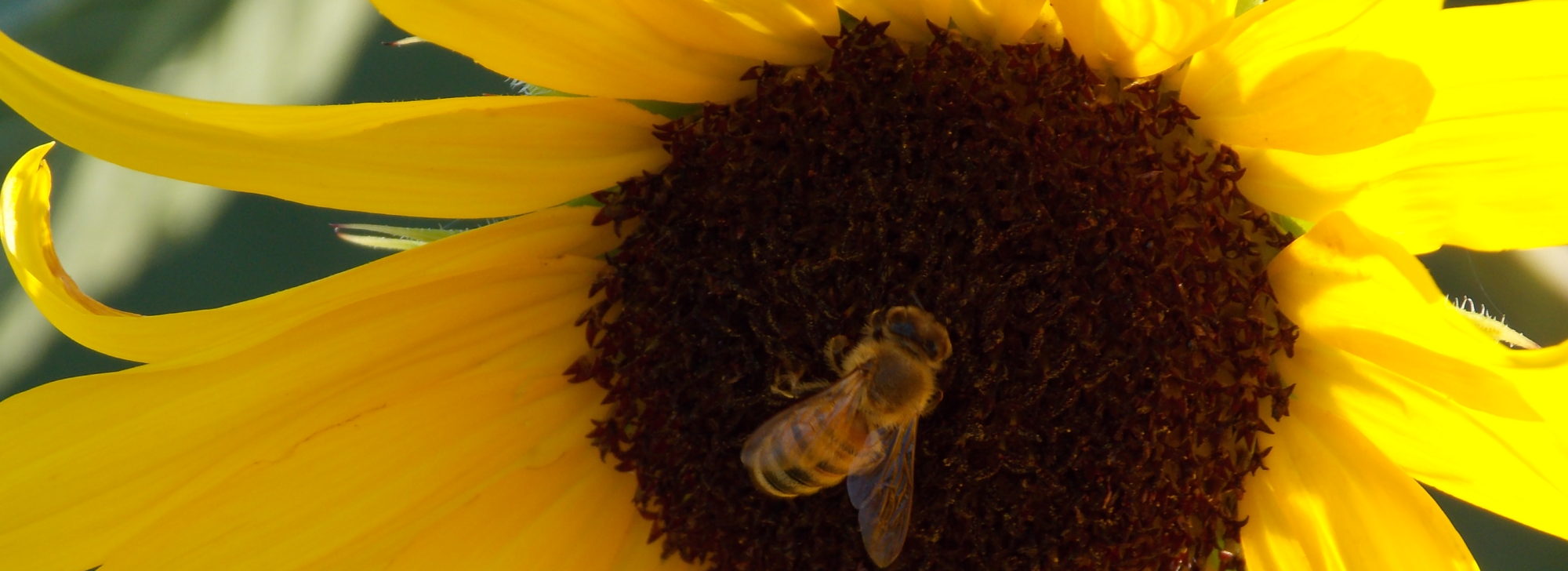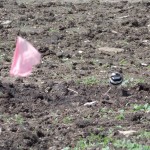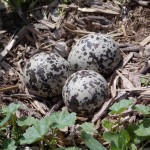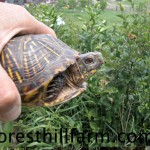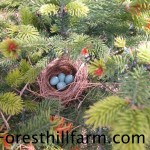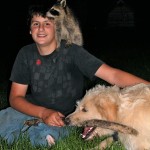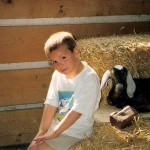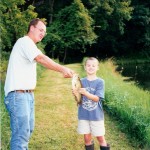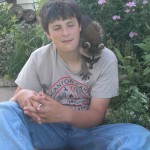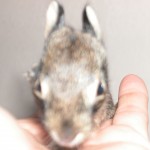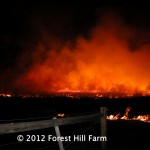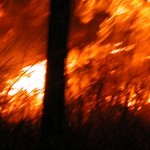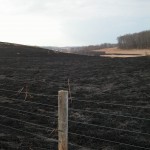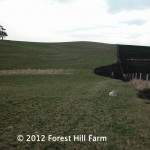Cookie ran past me and shouted something about needing to find a marking flag. I had no idea what he was talking about but I followed along to help him look . We found an older, tattered one in the machine shed. When I asked what he was marking he ran ahead to show me. He was seeding the pasture behind the hoop building with oats, barley, clover and rape seed. He noticed a Killdeer faking a broken wing, carefully he searched for the nest and found it in the gravel at the edge of the field. That's when he rushed past me looking for a flag. I'm proud that our boys have an appreciation for nature and respect their habitats. Over the years we've had unusual guests at our farm. When Garrett was younger he would find snakes in the spring and keep them until August, then he'd release them. Turtles, squirrels, bunnies, snakes, opossum, salamanders, and starlings have all made their way from our farm back into their natural habitat. Here's a small sampling:
Category: Land
Then and Now
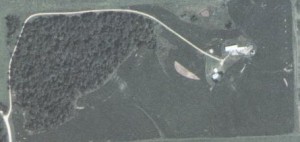

- 2010
On January 29, six years ago, we bought this farm. It wasn't a decision made in haste, we'd been preparing for the previous seventeen years. It wasn't a leap of faith, a bold adventure, or a risk. It was a confident step in the right direction. Farming started as a dream and three and a half acres. Later ten additional acres were added the farm grew steadily from there. Eventually expansion became impossible due to rising land values and housing developments taking over farmland in our area. The decision to move to Iowa wasn't difficult, it's been rewarding.
This farm was planted fence row to fence row with corn. The soil wasn't healthy, it was washing away with erosion. The land had been over used. The barnyard was overgrown with giant ragweed and the house, which we didn't see until we took possession, was horrible. Somehow we saw past these deficiencies and a bigger picture unfolded before us. Years of raising chickens, pigs, goats, turkeys and eventually cattle prepared us for growth. It was a culmination of dreams, plans, and knowledge. Six years later we've managed to halt the erosion, plant a couple hundred trees, replenish the soil, and plant a garden.The land is recovering, it's rewarding us with beautifully rich pastures. The wildlife is returning also; pheasants and wild turkey roam the fields. Hawks, hunting for snakes and field mice, fly above the baler while we make hay. Rabbits are abundant, aren't they always. They eat the trees, shrubs, and garden believing they were planted especially for them. Occasionally they're spotted nibbling the blueberry bushes. The dogs see them too, but, neither bunny or dog makes a move. Unfortunately, the dogs aren't menacing enough to keep the vermin away. The bunnies know it. Our pet rabbits, George and Popeye were viewed as protected pets and now all rabbits fall into this category. It's the same with raccoons. The dogs remember playing with Sammy, who was included in all of their farm adventures, to them, all raccoons are acceptable. The chickens strongly disagree.
Walking through the apple, peach and cherry trees I noticed chew marks and stripped bark on the youngest trees. The rabbits, sitting on top of snow drifts, ate the trees lower branches above the mesh wrap that was supposed to protect them. On winter afternoons a walk through the farm reveals areas that still need attention. Year by year these areas are shrinking. Eventually improvements will be made by desire instead of necessity. That day doesn't seem as distant anymore. However, one more improvement needs to be added to the never ending "to do" list; rabbit proof fencing.
A Dramatic Difference
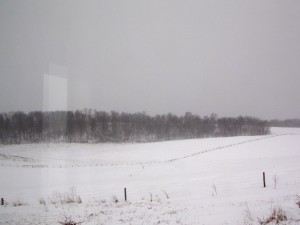
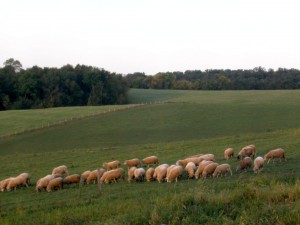
October - January
A dramatic difference in a small amount of time.
January - May
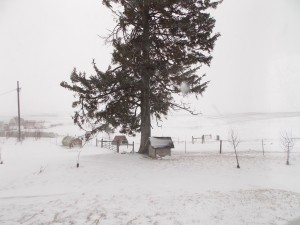
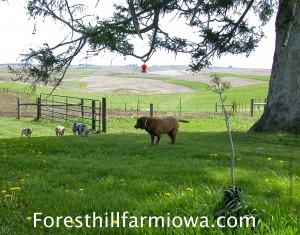
Drought Footprint from 1896 to 2012
Drought conditions continue to dominate the news. We've decided to have a positive attitude towards whatever life throws at us. If it's out of our control, it's out of our scope of worry. The site below has maps tracking drought conditions in the United States since 1896. The data is fascinating. Take a look at 1934, 1936, and 2012. Here's the Drought's Footprint Our neighbor remembers the drought of 1936. He and his brothers would walk their dairy cows onto the road and have them graze the ditches because the pastures didn't have any forage left for them. Some area farmers were cutting down cottonwood and poplar trees and feeding the leaves to their cattle. I hope this cycle ends and there will be plenty of snow cover this winter. I can't believe that I am hoping for snow.
Managing Livestock During a Drought
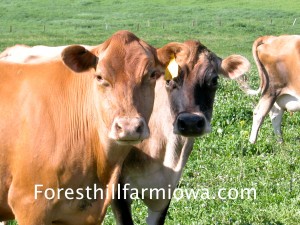 We've heard from many people concerned over the drought in Iowa. The Drought Monitor determined that 59% of the state is in severe drought. We are concerned and are trying to prepare for the worst. We're implementing a drought plan we've had in place for a few years, just in case. Because we rotationally graze, the ground has additional recovery time between foraging. During drought conditions overgrazing certain areas by increasing the stocker rate (number of cattle in a paddock) and allowing them more time in each paddock, gives larger areas of pasture more time to recover. This allows deep rooted legumes, weeds, and less palatable plants to hold the ground, keeping the soil in place when rain returns. If the weeds or cover crop were killed off, soil erosion would be accelerated. Soil erosion would leave very poor conditions for plant recovery.
We've heard from many people concerned over the drought in Iowa. The Drought Monitor determined that 59% of the state is in severe drought. We are concerned and are trying to prepare for the worst. We're implementing a drought plan we've had in place for a few years, just in case. Because we rotationally graze, the ground has additional recovery time between foraging. During drought conditions overgrazing certain areas by increasing the stocker rate (number of cattle in a paddock) and allowing them more time in each paddock, gives larger areas of pasture more time to recover. This allows deep rooted legumes, weeds, and less palatable plants to hold the ground, keeping the soil in place when rain returns. If the weeds or cover crop were killed off, soil erosion would be accelerated. Soil erosion would leave very poor conditions for plant recovery.
As unpleasant as the subject is, culling older herd animals is necessary. A few favorite cows are going to be sold, two horses were sold, and a third is being advertised for sale. There isn't enough hay for the profitable animals so the older animals and recreational pets have to go. It's tough. These are difficult decisions but necessary to sustain the herd and the land.
The sheep who are prone to overgraze deep rooted forages while ignoring grasses have been brought closer to the barn for management. If confined to smaller areas, the sheep will eat weeds and clean up grasses and dry pasture matter. The saying, "Beggars can't be choosers", applies. Another drought management option is early weaning. The calves and lambs are offered better grazing areas and the cows and ewes reduce their required feed intake by up to 40% when not lactating.
The dairy cows and calves haven't been separated, yet. Their yield is high and milk for the pigs keeps grain costs to a minimum. Sows, boars, and feeder pigs are grazing in smaller pasture areas, keeping rooting behavior to a minimum.
Hay prices and the rising cost of grain has us looking at changing our production model. This year we'll be selling off most of the feeder pigs. Carrying them through the winter months when grain prices will be at their highest would drive prices too high. We'll hold onto our sows and boars and breed for late spring rather than late winter farrowing.
With all of these practices in place we're optimistic about the coming year. As our friend says, "Every dry day that passes gets us one day closer to rain". He's right. Eventually it will rain. That's inevitable. The question is... when. Until that day our drought plan is in full force.
This would be the time to buy larger quantities of meat. The price is only going higher, at least until the next harvest season. Planning ahead can make a big difference in your budget.
Warmest wishes and food for thought,
Glenda
Bird Nests, Turtles, and Grass Farming
The Killdeer nests are spread out at the side of our drive, warning cries, from the mother birds, follow us as we walk. She drags her wing on the ground and feigns injury, when it becomes clear that we’re not paying attention, she fixes her wing again. Continuing her shrill cry of warning; ‘Kill-Dee, Kill-Dee, stay away from my chicks!’ A little further down the lane another killdeer simply cries, “Kill-Dee, stay back, I have a nest here!” A nesting killdeer doesn’t present the broken wing lure, she just screeches her warning (once her eggs hatch she'll use the broken wing ploy, too). Killdeer eggs are so well camouflaged it’s difficult to find them. Once you’ve seen the adult killdeer though, curiosity has you walking slowly, scanning the area for the indented patch of rock on the gravel drive. The nest has four speckled eggs resembling the surrounding rocks. When killdeer hatch they start running, immediately. The young take cover in tall grass and brush. The only identifier to their presence is to witness the antics of the parents.
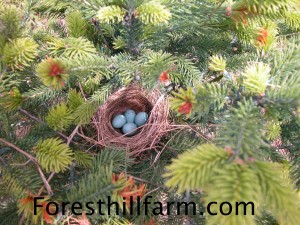
Our small wind break pines are hosting small, nesting birds; especially finch. They’re hardly noticeable, but when I take care of the turkeys the small birds fly out from the branches. With a long series of chirps they let me know I’m not welcome. This is a fragile time of year for both young birds and new crops. The plants needs rain, the young birds need dry warmth. Severe weather or heavy downpours leave the remains of nests scattered across the yard. It's a delicate balance that we witness daily on our farm. We've rescued a few fledgling birds with moderate success, others we've had to let go.
Another visitor, who just arrived this morning, is an Ornate Box Turtle. As Keith was driving down highway 13 he stopped to rescue a turtle from the road. Garrett identified it, and discovered it’s Iowa’s only completely terrestrial turtle. It’s a threatened species so our local DNR office will be relocating it.
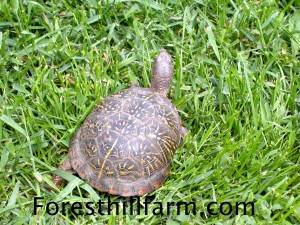
Sometimes our small grass farm feels like an oasis surrounded by expanding crop fields with bulldozed trees, genetically enhanced crops, and diminishing habitats. All for a few more acres of corn or beans, Why?
At the risk of sounding like a Master Card ad, here I go;
Finding a nesting bird with her beautiful blue eggs, and rescuing a threatened turtle ...priceless.
Creating an oasis for wildlife, plants, and insects ...priceless.
For all types other farming, there’s... (feel free to insert the name of a chemical or crop giant here).
It’s Mushroom Time!
A sure sign of spring
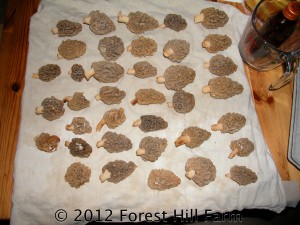
It’s morel season again, if you haven’t been a mushroom hunter in the past, now’s a great time to start. Mushroom hunters will never reveal their secret mushrooming spots, but they'll share how to find them.
Pre-plan your mushrooming trip. When morels are out, so are ticks, use bug repellant. If you are hunting on private property ask permission first. Walk softly and carry a big stick, or at least walk carefully, especially around the base of trees. You’ll use the stick to move leaves and branches out of the way. You’ll be crawling under bushes and around trees, gently moving leaves, to find morels. Bring along an onion bag or other mesh bag to carry your mushrooms. A paper grocery bag works well, too. Don’t use plastic bags. Morels hold moisture and will get slimy inside a plastic bag. Also, morels attract ants, slugs, spiders, and a host of creepy crawlers which will fall through the mesh bag and back to the ground. The mesh will also allow spores to fall onto the ground.
The best mushroom hunting weather is just after it rains on a warm spring day. When you get to a wooded area look for dead or dying elm trees. It’s not difficult to identify an elm tree they look like a child’s drawing; straight trunk with a lollipop top. You can look around poplars but you’ll have better luck with elms. If you aren’t interested in hunting in the woods golf courses and parks are also good spots. Garrett’s found quite a few while golfing. Not because he’s ending up in the rough but because he hunts for them while playing. I would caution that the course probably uses a plethora of chemicals, so be careful.
If you're unsure, or new to mushrooming, your local extension office will happily identify your mushrooms. False morels are dangerous, make sure you haven’t collected any. Here’s a link to help you learn more.
When you get home put your morels in cold, lightly salted water, with a dish on top to help hold them under water. I use clear pie plates to hold them down. We call this “puking” them there 's probably a better term, but it's what we've always called it. Wait a few minutes and all the bugs should be out.
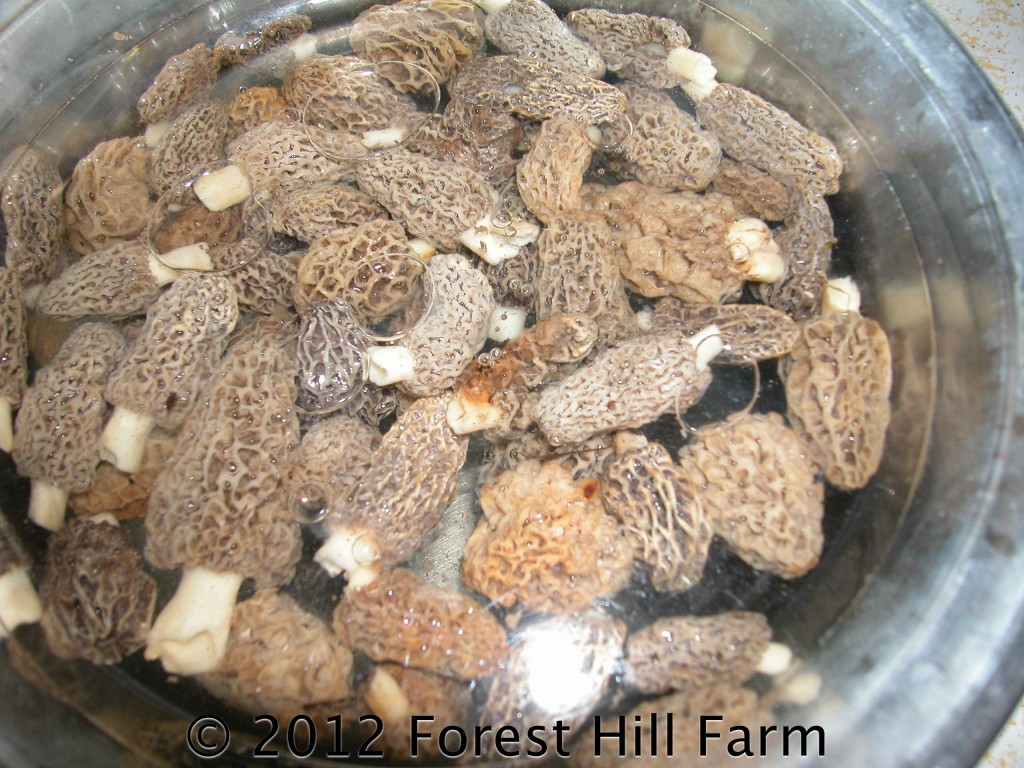
Rinse them, place them on a cookie sheet lined with a dish towel or on a rack so the water drains completely. Now for the good part, you can eat them, dry them, freeze them, or sell them. I think they're best served with beef roast or tossed in a light cream sauce and served over pasta.
A word of warning...Once you start mushrooming you'll be addicted. Morel hunting creates friendly competition. Sometimes it's less than friendly. There are groups of mushroom hunters that comb the timber in our area, without permission. Wearing camouflage, carrying maps, and GPS they're dropped in an area to search for morels. Several hours later they're picked up in a designated location. These professional hunters sell the mushrooms to restaurants and gourmet shops.
Our friend has a special tree where he finds hundreds of morels every spring, it's his secret spot. Someday he'll pass the location on to his children and grand children. For now he's extremely protective. He’s also the best walleye fisherman around, he has a secret spot along the river for that, too. I hope the professionals never find his magic tree. It's wonderful to see his face light up each spring when he recounts his morel yield.
What a diffenrence a day makes…or seven


What a difference a day, or in this case, seven makes. Burned grass and charred ground were the aftermath of last Sunday's burn. The blackened hillside contrasted dramatically from the green pasture separated by our fence line. One week later the new grass is coming through, hiding the scorched ground.
Only a week ago the landscape looked bleak. Now the birds, field mice, and pheasants are back. Soon there won't be any evidence of the burn.
The hawks are circling, they can easily see prey below, the field's perimeter still has tall grass and brush for protection.
The Best Laid Plans
It all started as a simple ditch burning, in the valley, on a beautiful afternoon. A few hours and a couple of fire departments later, the ditch, along with about 100 acres, were burned. When Keith and Garrett went to the neighbors the ditch was already burning gently. A fire break was lit to burn back toward the ditch, protecting the prairie grass. It wasn’t windy in the valley but the hillside had strong gusts which carried the flames across the dry grass.
Burning fence rows and pastures is common practice in the country. When burns are planned a defensive strategy is implemented, the operative word here is planned. Burn crews are equipped with shovels, rakes, and backpack sprayers. Water tanks on hay wagons and tractors with the chisel plows are ready for action. Those plans are for controlled burns. A simple ditch burning usually involves only a couple of neighbors, a couple rakes, a shovel and stories to swap. In this case mistakes were made:
This fire got away.
The grader blade, instead of a disc or plow, was on the tractor.
A defensive strategy plan wasn’t ready
"The best laid schemes o' mice an' men / Gang aft agley." (The best laid schemes of mice and men / Often go awry.) - Robert Burns
The blaze gained momentum, fueled by the wind, which carried the flames upland out of the valley. Once they reached the dry grass the fire took off, as they say, like wildfire. Keith, with only a grader blade attached, started dragging a fire break. Successfully containing the fire from heading northeast, the wind shifted and brought the flames back down through the valley and up the slope on the other side. In the darkness the front tractor wheel fell into a gully. It was stuck. The fire department’s water wagon, a few yards ahead, fell into the same gully. It was also stuck.
In 2008 we lost two barns, equipment, hay, straw, and tragically our sows and piglets, in a fire. It was a horrible experience so we use extreme caution where fire is concerned. Fire can get out of hand so quickly, a simple wind shift can wreak havoc and precaution has to be the rule. Thankfully, the fire fighters, as usual, knew just what to do. There isn’t any damage, in a few days the grass will start growing through the charred mass. The birds, who nest in prairie grasses, are safe. They’re just starting to return. They haven’t started building nests yet.
The school of adversity is a very good school, provided you don’t matriculate too early or continue too long. - L.K. Anspacher
Frost seeding

On my way to the mailbox today the sun was shining across the fields. You could almost see the green shoots of spring grasses willing themselves to reach through the tangle of brown, lifeless turf. This mild winter has the shrubs, trees, and plants fooled. They’re ready to surprise us with early blooms. Mother Nature still has a snowfall, or two, and bitter days ahead. With tight buds holding out for warmer days, it’s the perfect time to prune fruit trees and frost seed pastures. Legumes are the easiest to frost seed, the tiny seeds sift through the protective cover of orchard grass. Each freeze - thaw cycle works the seed deeper into the soil. Late winter and early spring rains are magical elements. The seed’s are waiting for warmth to burst out of their protective coat and rise to meet the sun.
